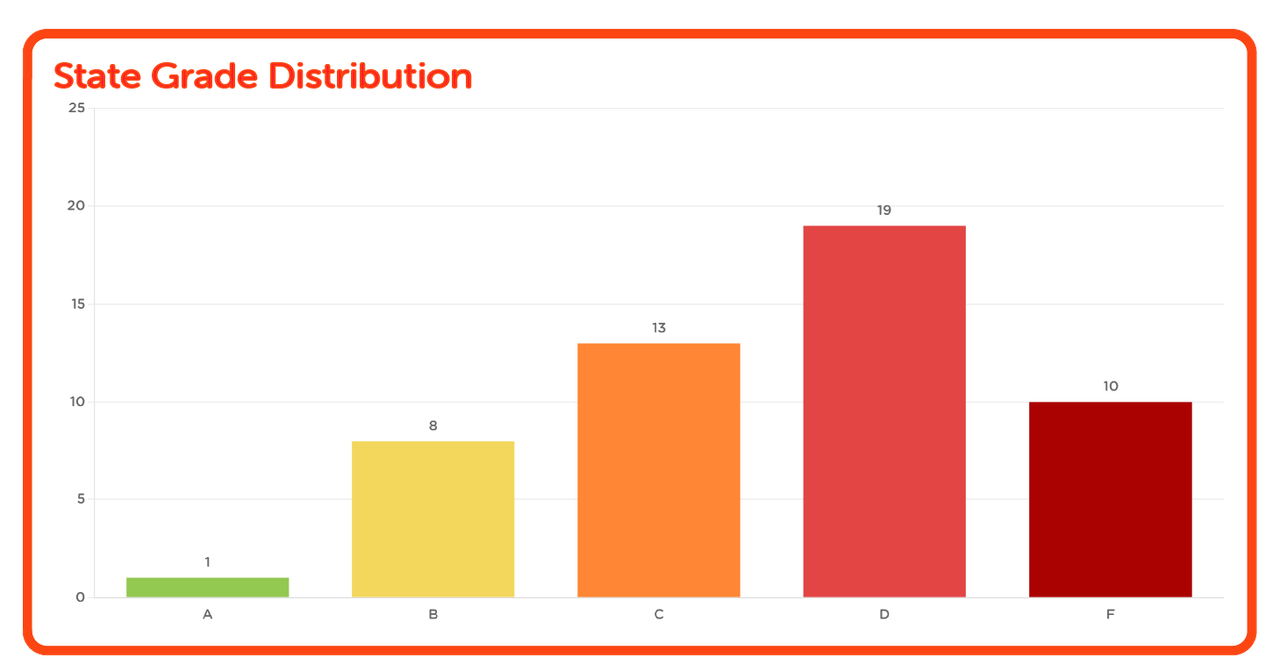|
We Researched and Graded All 50 States
To advance data science education, we need to understand what states are doing to support this curriculum in schools. We looked at each state and created a rubric to evaluate state-level efforts toward data science education.
While several states are taking big steps towards improved data science education, we focused on data science courses and standards that already exist or are feasible in the very near future. These grades demonstrate the opportunity states have to support data science education in our schools.
How Does Your State Compare?
The Results

Below is a summary of our rubric. Read the report to view a detailed version of the rubric.
| A |
-
Incorporation of mandatory data science learning into mathematics and other
- Extensive, advanced elective courses in data science
- Flexible graduation requirements OR requirements for data literacy by high school graduation
- Resources dedicated to promoting and supporting data science instruction
- Standards for data science start in middle school, if not earlier
|
|
B
|
- Mandatory data analysis standards
-
Additional data science classes or units in optional coursework
-
Recognition at the state level that data science is important
- Standards for data science start by freshmen year of high school
|
| C |
- Statistics or some data analysis in mathematics standards
- Additional data science content or units
- Standards would allow for data science units or electives in late high school, but may not emphasize or explicitly reference yet
|
| D |
- Some data analysis in mathematics
- Computer science standards may include data analysis, but courses are not widely taken
|
| F |
- Essentially no state interest or initiative on data science education
- Emphasis on traditional math pathways and classes
- May have a small amount of statistics in math standards
|
Take Action
How does your state compare? If your state didn’t score as high as you expected you may be wondering what you can do. Check out our advocacy pack to see how you can help, but if you only do two things do these:
Take Action
| 
